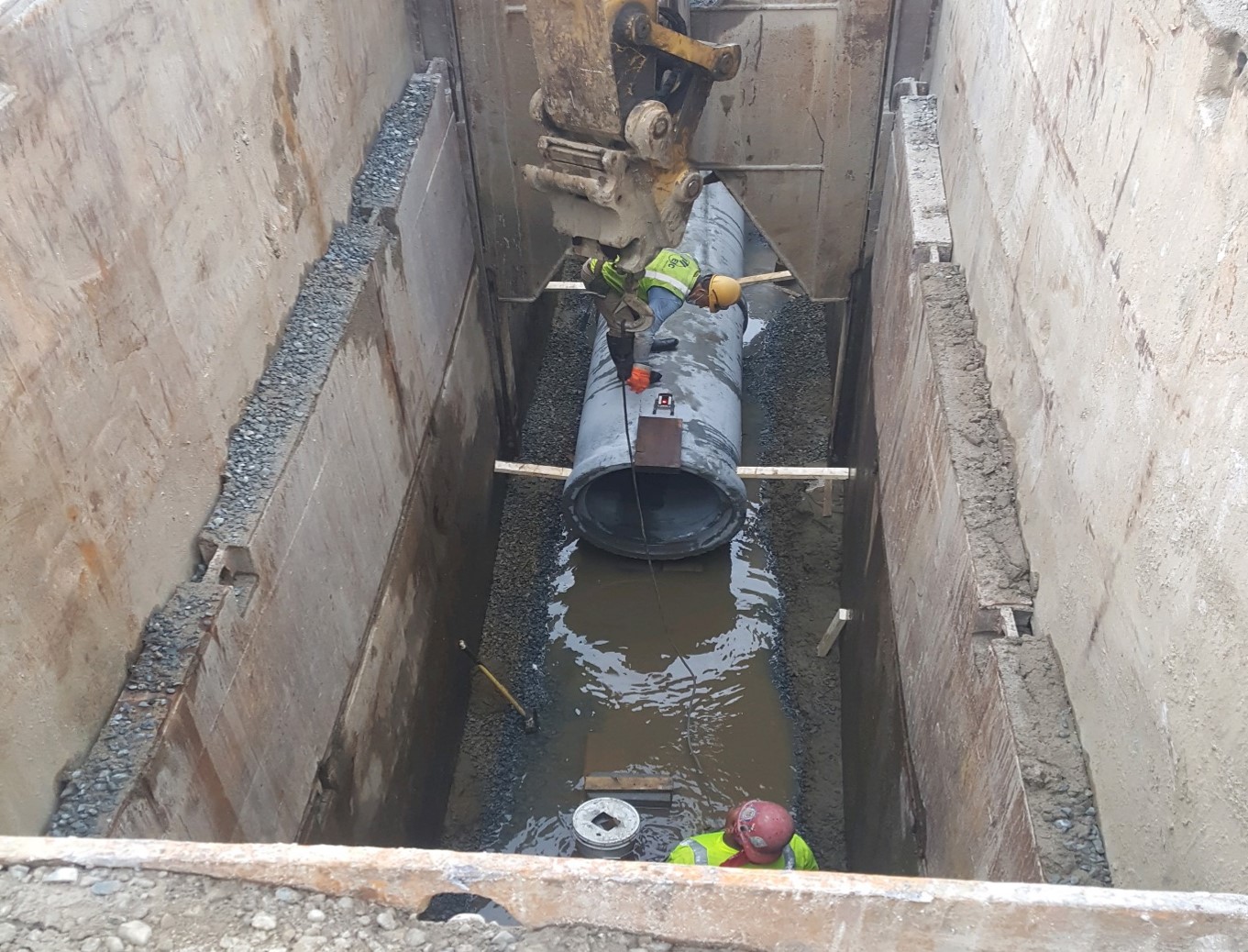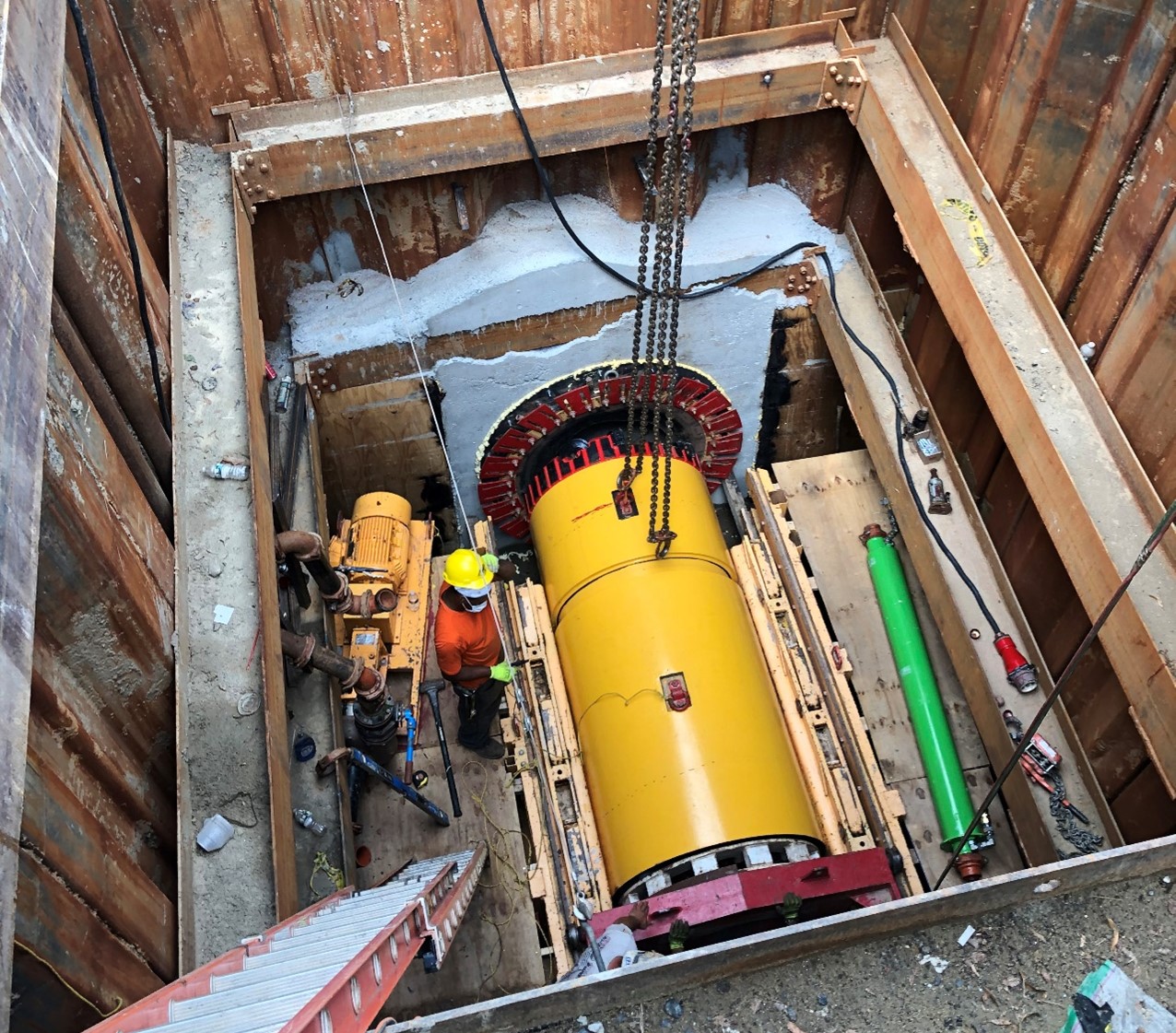$139 Million Drainage Upgrade Completed for College Point Neighborhood
September 26, 2024
By Separating What Was a Previously Combined Sewer System, Project Tripled the Neighborhood’s Drainage Capacity and Significantly Reduced Overflows into Flushing Bay
The New York City Departments of Environmental Protection (DEP), Transportation (DOT) and Design and Construction (DDC) on Thursday joined local elected officials to celebrate the completion of a $139 million project in College Point, Queens, that covered over 100 individual blocks, upgrading over six miles of water mains and over eight miles of sewers to improve stormwater drainage and water service. The project, which was managed by DDC for DEP and DOT, resulted in a significant reduction in combined sewer overflows into Flushing Bay.

“College Point has struggled with flooding and drainage issues for far too long,” said DEP Commissioner Rohit T. Aggarwala. “As climate change brings more extreme rainfall, this $139 million investment will ensure better stormwater management and help to reduce flooding. Importantly, it will also significantly reduce pollution discharged into Flushing Bay.”
“This major infrastructure investment will bring peace of mind to College Point residents who for years have dealt with poor street conditions and flooding after rainstorms,” said NYC Department of Design and Construction Commissioner Thomas Foley. “These upgrades will help with stormwater management in the area and mitigate the effects of climate change for local residents. I thank the DDC team, DEP and DOT teams for their hard work, and Councilmember Paladino and Queens Borough President Richards for supporting us through this extensive project.”

These infrastructure upgrades were made to enhance the quality of life for residents in the College Point area. The project replaced parts of the outdated combined sewer system with nearly 8.5 miles of new sewers—over 21,000 feet of storm sewers and over 22,000 feet of sanitary sewers. The construction of storm sewers included the installation of seven large storm sewer chambers and a tide gate designed as a barrier to prevent tidal waters from infiltrating the storm sewer system during high tide. Micro tunneling was used to dig in two locations, eliminating the need for 30-feet-deep excavations that would have caused noise and other disruptions to the neighborhood.
Seven miles of new, eight to 20-inch-diameter ductile iron water mains were installed, as well as 300 new catch basins. Additionally, 92 fire hydrants were installed, 30 trees were added and over 8,000 square feet of wetlands were restored.
To improve safety for all, over 4.5 acres of sidewalk and five miles of curb were upgraded, and 226 pedestrian ramps were upgraded to Americans with Disabilities Act standards. The project also included roadway resurfacing with 24.5 acres of new asphalt.

DEP manages New York City’s water supply, providing approximately 1 billion gallons of high-quality drinking water each day to nearly 10 million residents, including 8.5 million in New York City. The water is delivered from a watershed that extends more than 125 miles from the city, comprising 19 reservoirs and three controlled lakes. Approximately 7,000 miles of water mains, tunnels and aqueducts bring water to homes and businesses throughout the five boroughs, and 7,500 miles of sewer lines and 96 pump stations take wastewater to 14 in-city treatment plants. DEP also protects the health and safety of New Yorkers by enforcing the Air and Noise Codes and asbestos rules. DEP has a robust capital program, with a planned $29 billion in investments over the next 10 years. For more information, visit nyc.gov/dep, like us on Facebook, or follow us on X, formerly known as Twitter.




